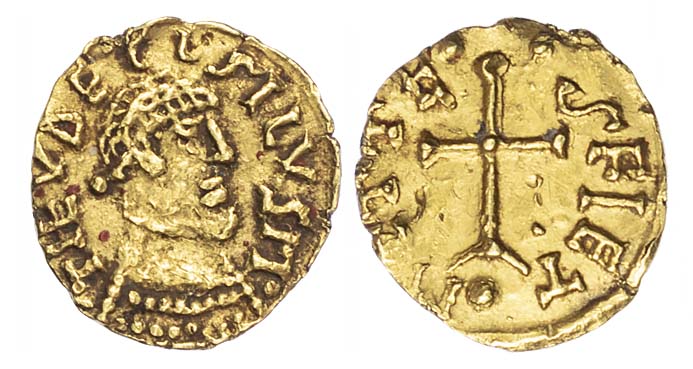
François Jobal was born in 1748 in Metz. Jobal descended from a prominent family from Lorraine and became a priest, a tradition for sons of renowned families of the period. With the years, his success grew and he became the Canon of the Noble Chapter of the Cathedral of Metz and Vicar-General of Angers.
At the age of 35, he was appointed Councillor Clerc of the Parliament of Metz. Abbot Jobal was also an antiquarian of note who formed a vast numismatic collection of Merovingian and Carolingian coins and of the coinage and medals of Lorraine. He also collected Medieval bronze seals, for which his work with the Cathedral gave him unparalleled access.
Jobal Collection and the French Revolution
In 1789, the year of the outbreak of the French Revolution, Catholicism was the official religion of France. The population of France at the time was considered predominantly Catholic and recognized the authority of the Roman Catholic Church and the pope.
However, by 1794, France’s churches and ecclesiastical orders were abolished and religious worship suppressed. Somewhat before the French Revolution, Abbot Jobal left France for Martinique in 1782 and again in 1783 as he was to become Commandant of the Island of Tobago.
Before his departure, his collection of seals and coins was packed and taken to the family Château de Lue in Hayes (close to Metz) for safekeeping, a Château which the family acquired in 1749. The coins remained with Abbott’s brother, Joseph-François-Louis, who served as lieutenant-general of the King’s armies and deputy for department Moselle in 1815. He was titled Count of Lue by Louis XVIII.
The collection remained in the Château as Abbott Jobal never returned to Hayes, passing away in 1806.

During the French Revolution, the Count of Jobal went into exile to fight for the Royalist cause and left the estate in the care of his sister. The collection was hidden in the attic, under piles of rags which subsequently saved it when the Château de Lue was looted. The Count eventually returned from exile, however, the collection was kept out of view for almost seventy years. After 1866, the Château was returned (by inheritance) to Count Pierre-Gaston de Lambertye (his grandson) who displayed the collection again.
The Merovingian Coins
All Merovingian coins are quite rare and since they come in so many different types, there are a lot of unique varieties. Merovingian coins are found in France, Belgium, the Netherlands, England, Switzerland and Western Germany.
Around the year 570 AD, Merovingian pseudo-Imperial coinage that imitated Byzantine examples is phased out and replaced by more distinctive, different types. The sole denomination was the gold tremissis and instead of kings, the numerous names of mints and moneyers appear in legends on coins.
The style of these coins is crude with legends often fragmentary or cut off from the flan of the coin. However, the scholarship at the moment recognizes more than 800 mints and more than 1,500 moneyers for these little coins. The so-called moneyers were probably artisan contractors producing short runs of coins from any available precious metals when the local dignitaries needed coins.

D/TEVDEGISELVS M•, diademed and draped bust right. Rev. R/ METTE•-•S FIET, Latin cross on a concave base, with a globe below.
(Belfort 2914 var.; Prou 928; Robert p. 116 pl. 4 – possibly this coin).
Very Fine, some deposits on the surface. Very rare.
In our Autumn Fixed Price List 2020, we are featuring a small selection of rare Merovingian coins. The highlight is the gold tremissis from the Collection of Abbott Jobal that comes with a historical ticket as well. It is a very rare piece from Metz with the name of moneyer Theudegiselus from the beginning of 7th century. Aside from the rare moneyer, it is rare to find a coin with such a long documented provenance, from a distinguished collector, which survived even the turbulent times of the French Revolution.
Literature:
Mémoires de l’Académie nationale de Metz, ‘La Famille de Jobal: Renseignements Généalogiques by l’abbé Ad. Barthélémy’, 1911-1912, Académie nationale de Metz.
Markowitz, M., The Merovingians – Coinage of the Do-Nothing Kings, 2016. CoinWeek.
This article was written by Ema Sikic.


